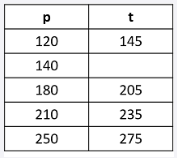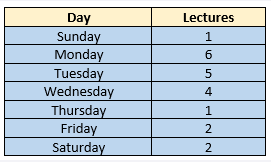Are you preparing your child for the iReady Math test?
Whether you want to boost their confidence, improve their scores, or better understand their academic progress, the right strategies can make a big difference. From building early math skills in kindergarten and 1st grade to mastering algebraic thinking in 7th and 8th grade, iReady Math covers a wide range of critical concepts. In this guide, you'll find essential tips, grade-specific insights, and practice tools to help your child succeed at every level of the iReady Math diagnostic.
Find out all about the iReady Test
What is the iReady Math Test?
The iReady Math test is an adaptive assessment designed to evaluate and enhance a student's math skills. Along with the iReady Reading it's a crucial component of the iReady educational software by Curriculum Associates, used in many schools across the United States.
Key features of the iReady Math test include:
- Adaptive testing: Questions adjust in difficulty based on student responses
- Comprehensive coverage: Assesses various math domains from K-8
- Detailed reporting: Provides insights into student strengths and areas for improvement
- No strict time limit: Students can take their time to complete the test
🚀 Ready to ace your iReady Math test?
Get our comprehensive iReady Math Prep Pack now and boost your scores!
iReady Math Sample Questions
The iReady Math test is designed to evaluate students' proficiency in a wide range of math subtopics, including number and operations, geometry, data and statistics, algebra, measurement, problem solving, and mathematical reasoning. Below, you will find a selection of iReady sample questions that reflect the diverse content and formats that appear in the iReady Math test:
Numbers and Operations
Questions can include any math problem that asks you to apply basic operations, such as addition, subtraction, multiplication, and division, in order to reach the answer.
Question 1:
Sharon drove for two hours at 30 miles per hour and then for one hour at 60 miles per hour. What was Sharon's average speed for the journey?
TestPrep-Online Tutor's Tip:
I always tell my students to avoid the common mistake of averaging the two speeds (30 + 60 ÷ 2 = 45). Instead, I teach them to remember that average speed requires total distance divided by total time. I have them practice this formula until it becomes automatic.
Explore our instant AI math tutor options
📊 Want More Practice Questions Like These?
Our iReady Math Prep Packs includes hundreds of similar questions to boost your confidence.
Algebra extends these operations to work with variables and more abstract mathematical structures, allowing for the representation and solution of a wide range of mathematical problems. Let’s look at a question that requires algebraic thinking.
Algebra and Algebraic Thinking
These questions ask you to solve problems or equations when there is at least one unknown variable, often represented by a letter, and you may need to find the value of that variable or else use the values you do know to determine potential outcomes.
Question 2:
Every day a factory makes 25 more T-shirts than pants. Complete the table, using the equation
t = 25 + p

TestPrep-Online Tutor's Tip:
I help students visualize algebraic relationships by having them read equations aloud. For t = 25 + p, I have them say "T-shirts equal pants plus 25." This verbal approach helps them understand that we're not just manipulating numbers—we're describing real relationships between quantities.
Still Searching for the Right Test Prep?
Many visitors who viewed this page also found success with our MAP Test, CAT4, OLSAT, Renaissance STAR, or STAAR preparation materials. Find your perfect match today!
The Measurement and Data section is a unique and important part of math assessments, testing practical skills and real-world applications of mathematical concepts.
Measurement and Data
These questions may ask you to analyze information in a chart or calculate values based on the data provided, or you may be asked to convert or calculate measurements in varying systems of measurement.
Question 3:
The number of lectures given during the week in the community center of Sedona, AZ:

What is the range of the lectures given during the week?
TestPrep-Online Tutor's Tip:
I teach students to quickly scan data sets by asking themselves two questions: "What's the biggest number?" and "What's the smallest number?" I have them circle these values first, then subtract. This prevents them from getting overwhelmed by all the data points and helps them focus on what's essential for range problems.
Geometry questions on math tests are unique in their emphasis on visual-spatial reasoning, application of specific rules and formulas, and real-world relevance, while also testing logical thinking and problem-solving skills in ways distinct from other areas of mathematics.
Geometry
These questions ask about the properties and dimensions of shapes, including lines and angles, and may also involve calculating missing or unknown values, such as area.
Question 4
Use the rectangle to answer the question.

What will be the effect on the area if the side length, 6, is doubled?
TestPrep-Online Tutor's Tip:
I help students understand area changes by having them visualize rectangles. When you double one side, you're essentially placing two identical rectangles side by side. I use grid paper to show this concept visually—it makes the relationship between dimension changes and area changes crystal clear.
🎯 Maximize your preparation with our iReady Math Prep Packs.
It includes full-length simulations, targeted practice, and expert tips. Order now and start improving!
What is iReady Classroom Mathematics?
iReady Classroom Mathematics is an educational program and is an integral part of the iReady educational platform, working hand in hand with the iReady Math test to create a comprehensive learning experience. It is aligned to the common core math program of study.
When students take the iReady Math test, it serves as an assessment tool, gauging their math skills and adaptively identifying their strengths and weaknesses. The results of this assessment form the foundation for personalized instruction within iReady Classroom Mathematics.
This instructional program is designed to support educators in the classroom. It provides a structured curriculum with lessons, activities, and practice exercises that are specifically tailored to align with each student's individual needs and learning objectives, all based on their performance in the iReady Math test.This personalized approach is particularly beneficial in 3rd grade math, where students are building foundational skills that will be crucial for future success.
By leveraging the data from the iReady Math test, iReady Classroom Mathematics offers targeted instruction, allowing students to focus on areas where improvement is needed.
Understanding the iReady Math Diagnostic
The iReady Math diagnostic is a crucial part of the iReady system. It:
- Assesses student skills across multiple math domains
- Adapts to each student's level
- Provides detailed performance data
- Informs personalized instruction plans
This diagnostic forms the foundation for targeted learning within the iReady Classroom Mathematics program, ensuring each student receives tailored support as understood by their iReady Math scores.
Our Family Membership covers every test your child might face. Stop searching. For less than the cost of two individual packs, you get:
♦ 12 months of unlimited test prep ♦ 3 profiles for personalized study ♦ Exclusive tips to keep you ahead
Finally, find what works.
iReady Math Grade Levels
The iReady Math Test is structured to assess students across various grade levels, from Kindergarten through eighth grade. Each level corresponds to specific mathematical skills and concepts appropriate for that grade. Here’s a breakdown of the iReady Math grade levels and the focus areas for each:
iReady Math Grade Levels and Focus Areas
- Level AA – Kindergarten: Focuses on foundational skills such as number recognition, counting, and basic shape identification.
- Level A – First Grade: Assesses number sense, basic addition and subtraction (up to 20), simple fractions, and problem-solving skills.
- Level B – Second Grade: Covers addition and subtraction (up to 100), basic multiplication concepts, and measurement skills.
- Level C – Third Grade: Includes multiplication and division (up to 100), fractions, and concepts of area.
- Level D – Fourth Grade: Focuses on fractions, decimals, and multi-digit multiplication.
- Level E – Fifth Grade: Assesses division of larger numbers, operations with fractions, and an introduction to volume concepts.
- Level F – Sixth Grade: Covers advanced arithmetic, introductory algebra, and basic geometry.
- Level G – Seventh Grade: Focuses on algebraic expressions, ratios, and probability.
- Level H – Eighth Grade: Includes linear equations, functions, and more complex geometry concepts.
The program's levels are linked to the iReady Math Diagnostic Test, which assesses a student's proficiency in various math skills and places them at an appropriate level. The Classroom Mathematics program provides lessons and materials according to the student’s level on the test, ensuring that instruction is tailored to each student's needs. This approach facilitates a personalized and adaptive learning experience, catering to the unique strengths and challenges of each student in mathematics.
Prepare Your Child for iReady Math Success
Get the iReady Kindergarten Math Practice Pack today and give your child the tools they need to excel on the adaptive iReady assessment. Expose them to a wide range of math concepts and difficulty levels, helping them master the foundational skills they'll need to thrive.
What is a Good iReady Math Score?
A "good" score on the iReady Math Diagnostic test depends on the grade level of the student and their individual learning goals. Generally, a good iReady math score that is above the 90th percentile is considered excellent.
A good score would typically be:
- At Grade Level
- One Grade Above
- Two Grades Above
- Three Grades Above
For example:
- For a 4th grader, a score of 451-571 would be considered "At Grade Level", while 572 and above would be above grade level.
- For a 7th grader, 593-620 is "At Grade Level", with 621 and above being above grade level.
Calculation of iReady Math Scores
- Overall Scale Score: The scores range from 100 to 800, reflecting the student's overall performance. (This is similar to the iReady Reading Score but the range is different).This score is derived from the aggregate of all questions seen by the student, factoring in both the accuracy and difficulty level of the questions attempted.
- Domain-Level Scores: In addition to the overall score, the test provides domain-specific scores that highlight a student's strengths and areas for improvement in specific math topics.
- Norms and Percentiles: The scores are compared against national norms to determine percentile rankings. This comparison shows how a student's performance measures up against peers in the same grade, helping to identify whether they are performing at, above, or below grade level
iReady Math Test Prep Pack
Unlock your child's potential in Math.
This comprehensive resource provides targeted practice that aligns perfectly with the iReady curriculum.
Purchase the iReady Math Test Prep Pack today and watch their math skills soar
How Do I Prepare for the iReady Math Test?
Preparing for the iReady Math test requires a strategic approach tailored to its adaptive format and content. Here are some exclusive tips to help you or your child excel on the iReady Math test:
- Understand the Adaptive Nature: Recognize that the iReady Math test adapts to your performance. If you answer questions correctly, they will become more challenging. Conversely, if you struggle with certain concepts, the questions will become more focused on those areas and less complex. Embrace the adaptability as it tailors the test to your specific needs.
- Use iReady Classroom Mathematics: If you have access to the iReady Classroom Mathematics program, use it to your advantage. This program offers lessons and practice exercises tailored to your skill level, as determined by the diagnostic assessment. It's an excellent resource for targeted practice.
- Practice with Full-Length Simulations: To get a feel for the test's timing and format, consider practicing with full-length simulations. These simulations mimic the actual test, allowing you to experience the adaptive nature and question variety firsthand. This can help you build endurance and reduce test-day stress, as you'll be more familiar with what to expect.
- Focus on Foundational Skills: Pay extra attention to foundational math skills that serve as building blocks for more advanced concepts. Mastering topics such as addition, subtraction, multiplication, division, fractions, and basic geometry will provide a strong base for tackling higher-level math questions.
Remember that the iReady Math test is designed to support your learning journey by identifying areas for improvement and offering personalized instruction. Embrace the process, stay motivated, and use these tips to excel on the test.
iReady Math FAQ's
The highest level in iReady math is Level H (8th Grade), offering a comprehensive exploration of advanced mathematical concepts. Students at this level delve into topics such as exponents, linear equations, systems of equations, functions, and geometric transformations.
In Level H, students also analyze scatter plots and gain a solid foundation for tackling high school-level mathematics. Level H equips students with the skills and knowledge needed to handle more complex math challenges.
iReady Math assessments typically do not allow the use of external calculators. The assessments are designed to evaluate students' math skills, understanding, and problem-solving abilities without the assistance of calculators or other external tools.
The difficulty of the iReady Math test varies depending on your grade level and your math skills. It adapts to your abilities, so it can be challenging if you're strong in math or easier if you need more help.
Your level of preparation and familiarity with math concepts also plays a significant role in how difficult it feels. In general, it's designed to assess and help you improve your math skills at your grade level.
The system provides detailed information about skill gaps and recommends targeted instruction. Students receive appropriately leveled practice materials to build foundational skills systematically.



